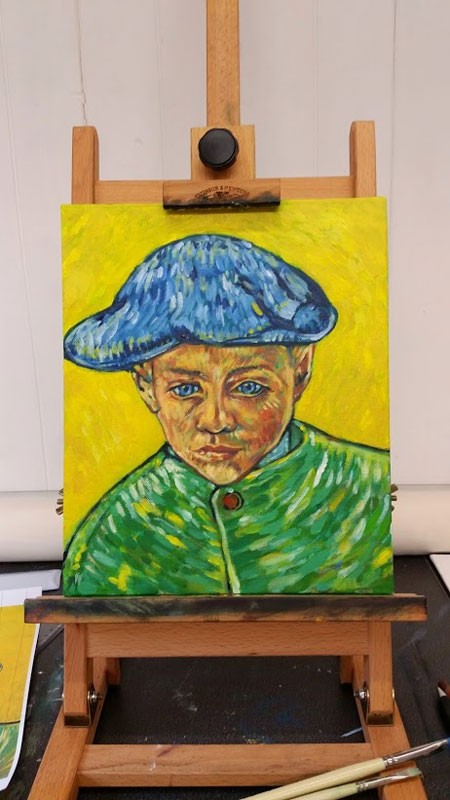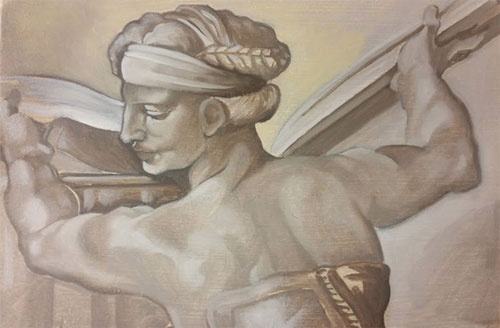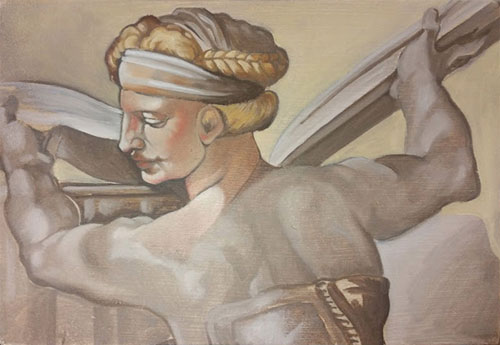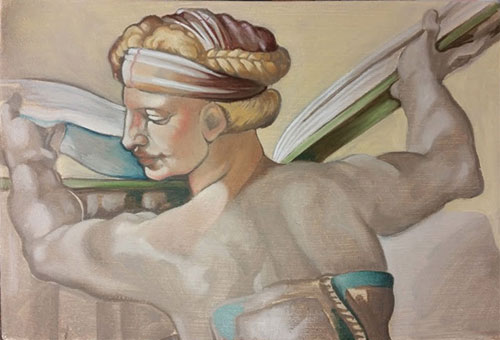Looking at Old Masters and attempting to reproduce them can give a great insight into the way paintings are put together. We can see how great Artists approached perspective, colour or light, get a feel for the way they actually applied the paint or improve our own compositions by carefully copying how they set out theirs. It is also great fun!

In a past post, Peter tackled a copy of Camille by Van Gogh to explore the type of colours and the layering of colour that Van Gogh used as well as to demonstrate how to ‘grid up’ when copying an image.
In this post, I looked at Michelangelo’s ‘Libyan Sybil’ from his Sistine Chapel masterpiece to explore how Michelangelo dealt with muscle tone and skin colouring and also to experiment with grisaille underpainting. Grisaille is monochrome painting, usually in shades of grey, that can be used as underpainting or, as Michelangelo himself used in areas of the chapel ceiling, left as it is to mimic ornately carved stonework.

Limiting the palette focuses the mind on just form and the light falling on it as there is no colour theer to define edges, curves and depth.

Once happy with the drawing and tonal values, you can then start adding colour just like tinting a black and white photo!

For this piece, I used oil on gessoed wood so applied the colour in glazes of oil colour, linseed oil and a little turps. Dry brushing Acrylic colour over an Acrylic grisaille works really nicely too and is, of course, a lot quicker!

Why not give it a go as it really is a great way to learn a few more skills to transfer to your own Artwork!
